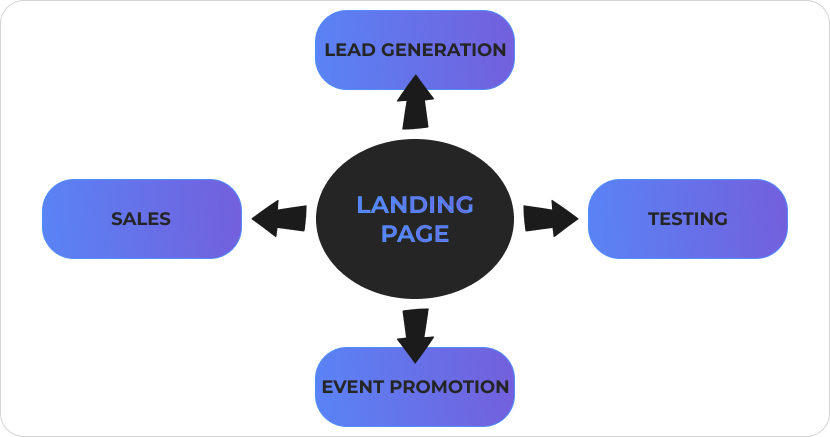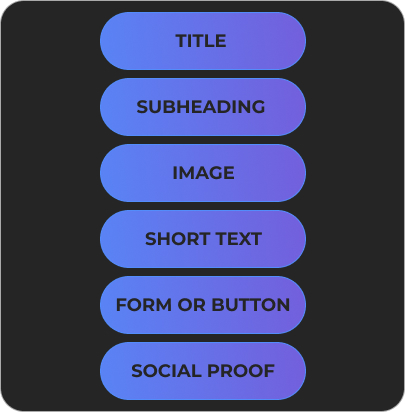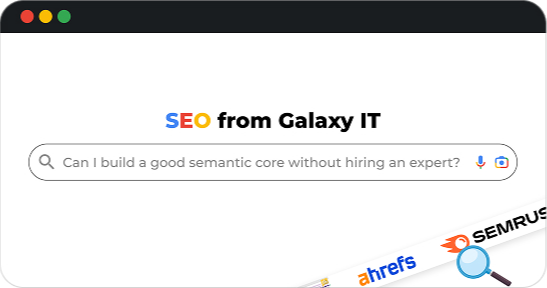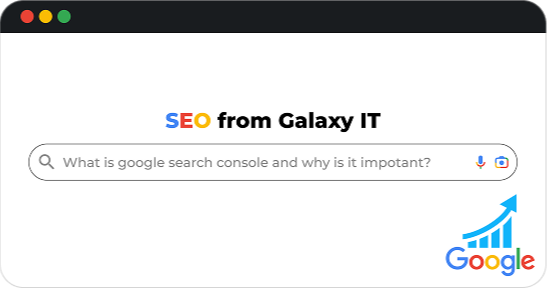Essentials of a High Converting Landing Page
- 21.06.2024
- 1 views
- 5 min
Why Do Businesses Need a Landing Page?
Effectively reaching the appropriate audience with compelling messages is crucial for achieving business success. A landing page serves as a powerful marketing tool in this endeavor, acting as a storefront for products or services in today's digital landscape. Therefore, having a clear and persuasive webpage is essential.
This guide aims to provide insights into creating landing pages that effectively generate leads. Drawing from our experience and knowledge, we will discuss best practices and valuable tips for crafting high-converting landing pages. You will learn about their purpose in business and the essential components that contribute to their effectiveness. Based on our expertise, we will share strategies to develop robust landing pages that resonate with your audience and drive conversions.
Why Do Businesses Need a Landing Page?
A landing page serves as a powerful tool to enhance the effectiveness of advertisements and compel clients to take desired actions for your business. Depending on your objectives and the complexity of your offerings, landing pages can range from containing a few essential elements to being quite extensive. They can also vary in structure, whether they are single-step or multi-step. Essentially, a landing page functions as a funnel that guides visitors towards completing specific actions such as purchasing a product, ordering a service, requesting a subscription, or registering on a website.

The Business Tasks Landing Pages Solve:
-
Event Presentation: Utilizing a one-page website can effectively inform clients about upcoming conferences, webinars, concerts, or festivals. Incorporating high-quality, creative graphics enhances the visual appeal and overall effectiveness of your page.
-
Sales: When structured appropriately, a landing page can showcase your product or service offerings in a compelling manner. This makes it a favored tool for promoting special products by businesses.
-
Testing: Redirecting a portion of your website traffic to a landing page allows you to gauge your target audience's interest in new offerings. Analytics derived from this process provide valuable insights for determining future strategies.
-
Collecting Contacts: Creating a marketing website and sharing its link with your email contact database enables you to gather additional user information. Offering incentives such as free webinars or downloadable e-books encourages clicks and enhances engagement on the page.
Key Components of a Landing Page
Stick to the Process
Effective team collaboration is essential when aiming to create a high-converting landing page. We suggest involving a diverse team of experts including marketing specialists, copywriters, designers, layout designers, and developers for brainstorming and execution. This collaborative approach harnesses the skills and knowledge of each specialist, ensuring optimal conversion rates for your landing page.
From Galaxy's experience, the top-performing process on how to build a landing page is the following:
Research Stage: Collaborate with marketing specialists and your client to analyze competitors' offerings and identify effective practices to adopt or avoid. Identify the pain points of potential buyers and conduct a product audit to highlight key features that should be featured on the landing page.
Design Stage: Begin with the UX/UI designer outlining the initial structure of the landing page, focusing on key marketing elements. The copywriter then refines the text to ensure it is persuasive and easily understandable for the target audience. The UX/UI designer then finalizes and refines the design to present a clear visual representation of the landing page to the team.
Development Stage: Using the finalized design from Figma, the developer proceeds to create the actual webpage for the landing page design.
Adapt a Landing Page to Your Business Needs
Business goals dictate the core purpose of your landing page, making it the initial crucial step in creating high-converting pages. This tool allows you to enhance brand visibility, drive sales, educate your audience, or experiment with new concepts.
The type of landing page is determined by these business objectives. Depending on the scope and goals of your marketing campaign, you may opt for a concise or comprehensive design, a one-step or two-step process. Additionally, the layout structure should always align effectively with the specific business goals you are pursuing.
Investigate Your Target Audience Carefully
Understanding your audience is crucial for crafting an effective landing page. It's essential to identify the primary pain points, needs, and preferences of your potential buyers to establish a connection. Here are key indicators to gather relevant information:
- Demographics: Gather details such as location, age, relationship status, job title, and other pertinent factors.
- Keywords: Determine what your audience is searching for online and understand their language and terminology.
- Interests: Explore their brand loyalty, attitudes towards influencers, and potential hobbies or passions.
By collecting and analyzing these indicators, you can create a landing page that resonates with your audience and effectively communicates your message.

Introduce Strong Copywriting
On a landing page, it's essential to narrate a compelling story that concludes with a persuasive call-to-action (CTA) button. This is why the most successful landing pages benefit from the expertise of professionals who excel in creating impactful copy.
Effective copy that drives high conversion rates should be succinct, avoiding unnecessary words and unclear sentences while being clear and convincing. It should simplify complex concepts into easily understandable language and inspire readers to take the desired high-converting action.
Consider Adaptivity to Different Devices
The quick loading speed and technical usability of a landing page can greatly enhance your business outcomes. With the increasing preference for mobile webpages and apps featuring adaptive UI designs, prioritizing mobile-first development from the outset can prove advantageous. This approach helps address crucial user experience issues and effectively generates leads from smartphones.
Make the Landing Page Design Stand Out
When creating a landing page to promote your product or service, it's advisable to avoid conventional approaches and overused layouts.
Furthermore, prioritize coding efficiency by striking a balance between creativity and practicality. Designers can expedite coding by preparing a style guide for layouts, employing grids, and organizing landing page elements systematically. When dealing with intricate elements, visual representation often clarifies better
Contact Galaxy IT and Well Help You!
Creating effective high-converting landing pages requires a clear understanding of business goals, a focus on client needs, and a well-defined design and development process.
Reach out to Galaxy IT for expert guidance in constructing your own landing page! We're eager to leverage our expertise to design a compelling and impactful webpage tailored to your business objectives. Contact us today to get started!









